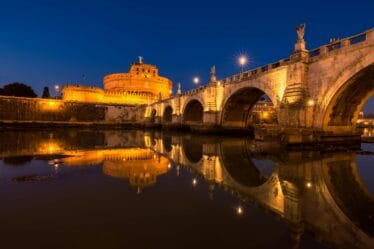

In the heart of Rome, tucked away in a shadowy alley named Vicolo del Divino Amore, there’s a window — small, unassuming, and easy to miss. Yet this aperture, known today as Caravaggio’s Secret Light Window, offers a direct line into the mind of one of the most revolutionary artists of the Baroque period: Michelangelo Merisi da Caravaggio.
A Radical Artist in Rome
Born in 1571, Caravaggio moved to Rome in his twenties and quickly gained notoriety — both for his raw, realistic paintings and his volatile lifestyle. Known for painting ordinary people with divine intensity, he often clashed with both the artistic establishment and the law.
Eventually, Caravaggio settled in a small apartment on Vicolo del Divino Amore, located in Rome’s Campo Marzio district. But rather than accept the limitations of his space, he transformed it. With a chisel in hand, he cut through the ceiling himself — not out of defiance, but out of artistic necessity. That opening became what we now call Caravaggio’s Secret Light Window.
Why the Light Mattered
Caravaggio’s paintings are famous for their dramatic use of light and shadow — a style now known as chiaroscuro. But this wasn’t just technique; it was philosophy. He believed that light revealed truth, and therefore, he engineered it with precision. The hole in his ceiling allowed daylight to enter from a single, high angle — falling sharply across the room, much like in his iconic painting The Calling of Saint Matthew.
Though that masterpiece was painted elsewhere, the same kind of lighting was born here. In a dark, narrow alley, he found divine control. Caravaggio’s Secret Light Window became his hidden weapon — a tool for mastering the contrast between holy radiance and earthly shadow.
Visiting the Vicolo
To find this hidden gem, walk to Vicolo del Divino Amore, located between Via dei Prefetti and Piazza della Torretta. As you stroll down the alley, look up to the left side of the street. There, modest and closed, is the window he created. The building remains private, so entry is not possible, but even from the street, its meaning radiates.
Much like his art, the window doesn’t shout for attention — but once you know its story, you’ll never forget it. It’s not simply a relic of the past; it’s a key to understanding how Caravaggio literally shaped his surroundings to serve his vision.
Why It Still Matters
In the age of artificial lighting and digital filters, standing before a centuries-old opening carved by a master’s hand is a humbling experience. It’s a reminder that genius sometimes requires breaking through walls — quite literally. And that Caravaggio’s Secret Light Window is more than a piece of architectural trivia. It is the physical manifestation of an artist’s unrelenting need to capture truth in a beam of light.
So next time you’re in Rome, skip the tourist-packed plazas for a moment. Head down that narrow alley and look up. Because now you know: Caravaggio’s Secret Light Window is waiting.
Further Reading:
- Caravaggio’s Rome: Where to Follow His Trail
- The Power of Light in Caravaggio’s Art
- Google Maps – Vicolo del Divino Amore



